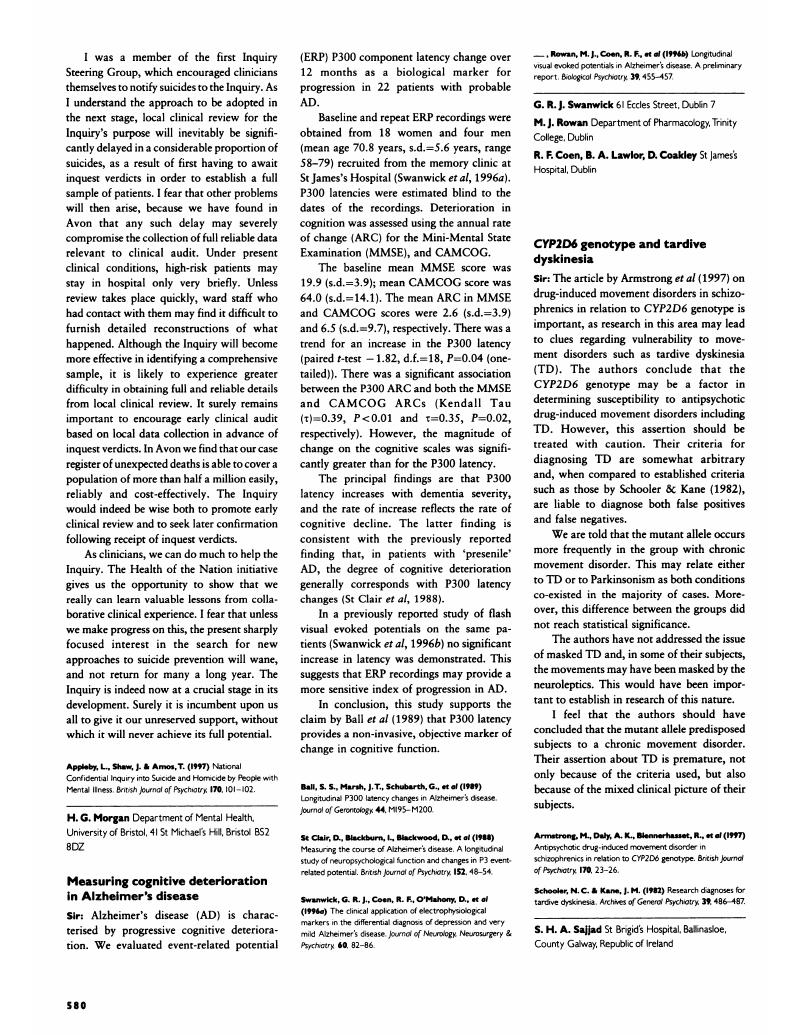Crossref Citations
This article has been cited by the following publications. This list is generated based on data provided by Crossref.
Swanwick, Gregory R.J.
Rowan, Michael J.
Coen, Robert F.
Coakley, Davis
and
Lawlor, Brian A.
1999.
Prognostic Value of Electrophysiological Markers in Alzheimer's Disease.
The American Journal of Geriatric Psychiatry,
Vol. 7,
Issue. 4,
p.
335.
Hegerl, U.
Hensch, T.
and
Mulert, C.
2011.
Psychiatrie, Psychosomatik, Psychotherapie.
p.
277.




eLetters
No eLetters have been published for this article.